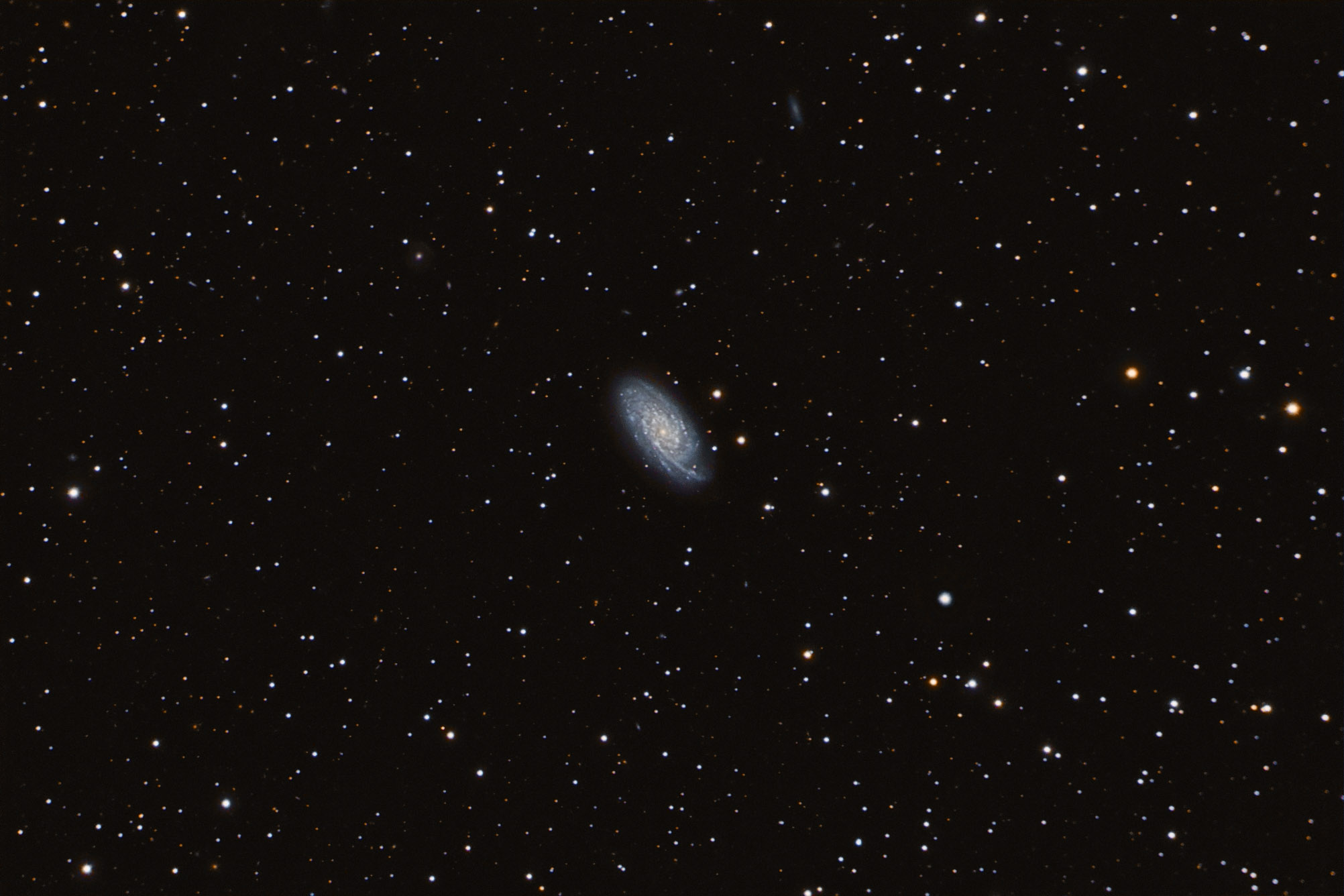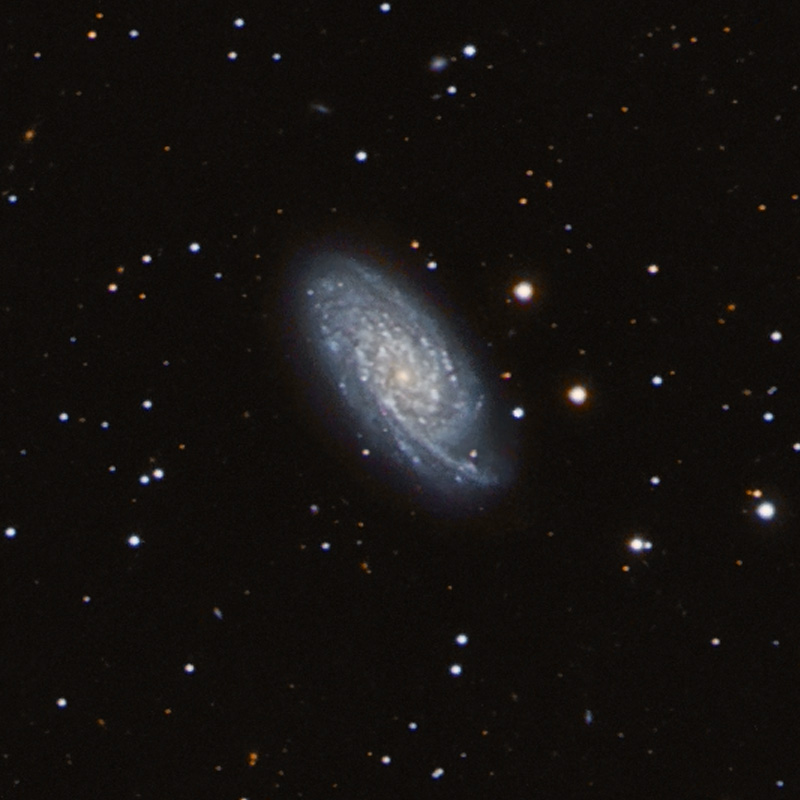| Description | Images |
Object name: NGC6643Designation(s): NGC6643, NGC 6643 is a nearby spiral galaxy in Draco about 65 million light-years by redshift. I put it on my to-do list because it is giving us the finger in the form of a spiral arm that sticks out at an odd angle. It is a very blue spiral classed as SA(rs)c by NED. The blue color indicates much of its light comes from newly minted massive blue stars. Notes at NED indicate there are extensive H alpha regions outlining the spiral arms. They don't show in my LRGB image, however. Though the blue star clusters forming in them do show as blue knots that give the galaxy most of its spiral structure. Except for the odd rather straight arm to the southwest, its spiral arms are rather weak being overpowered by the star clusters along the arms. What triggered this massive star formation apparently isn't known. At least I was unable to find anything on this. It lacks any close by companions. It was discovered by Eduard Schönfeld in 1858. The exact date is unknown. Horace Tuttle then discovered it independently on September 1, 1859. Related Designation(s):2MASS J18194651+7434059, 2MASX J18194636+7434062, 2MASXi J1819466+743411, 2MIG 2491, 87GB 182113.7+743308, 87GB[BWE91] 1821+7433, AKARI J1819464+743409, CGCG 1821.2+7432, CGCG 340-043, HIJASS J1819+74, IRAS 18212+7432, IRAS F18212+7432, ISOSS J18201+7433, KIG 0850, MCG +12-17-021, NGC 6643, NGC6643, NVSS J181946+743409, PGC 061742, UGC 11218, UZC J181946.7+743408, [SLK2004] 1452, |

